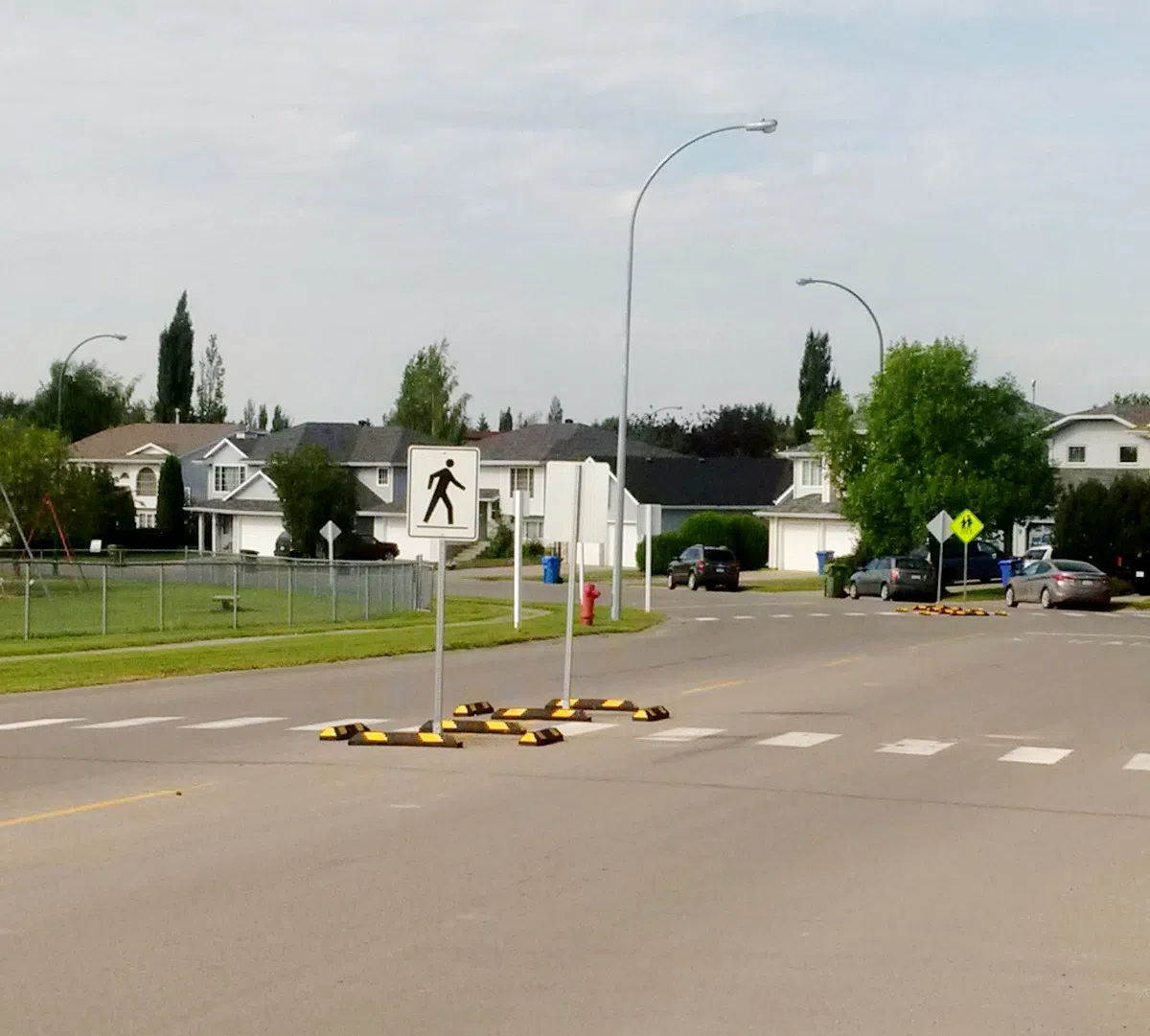
POLL: City testing new way to make school zones safer
Prince Albert is trying to slow down traffic in school zones and it is giving a new method a trial run along Olive Diefenbaker Drive.
The one-year traffic calming island pilot project begins the week before students at the nearby St. Francis School and Ecole Vickers return to class.
In five crosswalks, crews have laid down eight yellow and black temporary islands in each one. They are meant to force drivers to slow their vehicles down to avoid running the islands over. At each area, there are school zone signs. The traffic calming devices, as they are called, are located between Bradbury Drive and Pereverzoff Place.
“It’s just another tool we’re trying to use to get people to slow down to 30 kilometres [per hour] to get through school zones,” Mayor Greg Dionne said, one day after the islands were installed.


